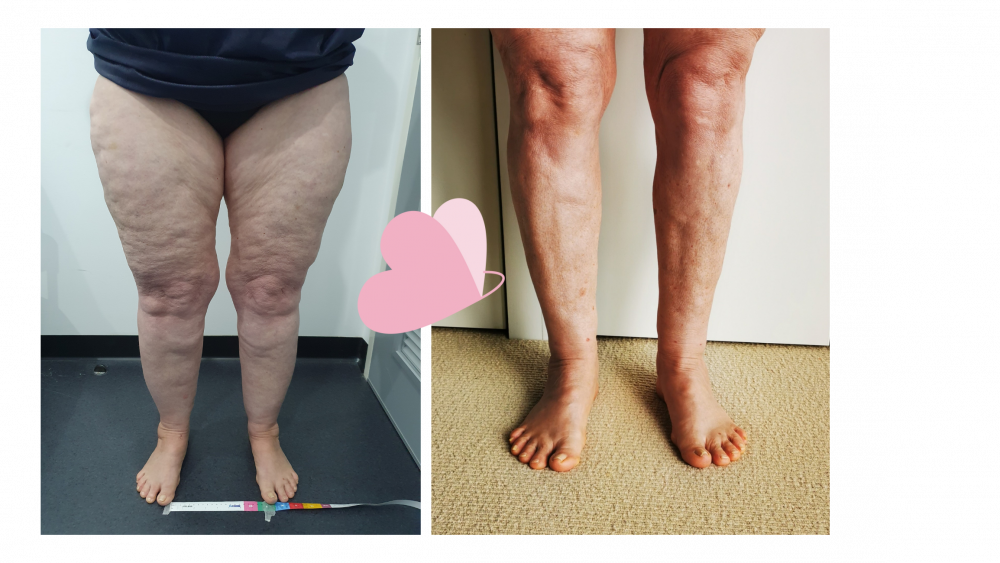This 61 year old patient says her Lipoedema journey began when she was a teenager.
Although a very active teen, her ‘pear’ shape never changed – thin at the top with larger thighs. It was put down to family genetics. As the years passed and she had children, she says her shape just expanded. Despite eating well and exercising regularly, she went from a size 10-12 as a teen, to a size 16-18 in her sixties.
Liposuction was undertaken in her forties in an attempt to bring her lower half in proportion with her top half. However, she wasn’t aware at the time that her condition was the result of Lipoedema. Following menopause, she says it was nearly impossible to lose weight despite daily exercise and a healthy diet. “I lost hope” She says.
Finally coming across the term Lipoedema at age sixty provided some answers, with Dr Lekich diagnosing her as stage 3 Lipoedema with underlying Lymphodema. Conservative management protocols were then implemented, utilising a ketogenic diet, medical grade compression and regular manual lymphatic drainage (MLD) appointments resulted in some weight loss of fat not caused by the Lipoedema component.
Following positive results with conservative management, the patient decided to go ahead with the first of three recommended surgeries on her lower legs in November 2020. Using a Lymph Sparing protocol, developed in Germany by Dr Heck, the surgery resulted in 7.1 Litres of diseased fat being removed . She says her first impression immediately post-surgery was how thin her legs looked. She experienced some swelling and numbness that reduced as the weeks passed. She continued to have regular MLD appointments to aid with lymphatic drainage and massaged her legs every night before sleeping.
In June 2021, the patient underwent a second surgery on the anterior of her upper legs, resulting in 7 litres being extracted. Finally, in November 2021, the patient underwent her third and final surgery on the posterior of her upper legs, resulting in 8.2 litres being extracted. In total, 22.3 lites of diseased fat was extracted that could not be exercised or dieted away.
Between surgeries the patient walked regularly for exercise and felt her mobilisation was already much better, due to not feeling as heavy in her legs. She continues to follow a ketogenic diet to prevent any further weight gain and wears compression garments daily, in time, this can be reduced.
Currently at four weeks post-op, the patient says surgery has been life changing for her in terms of quality of movement. “I’m lighter on my feet and exercise is a breeze” she says. She believes this will lead to increased wellbeing down the track.



